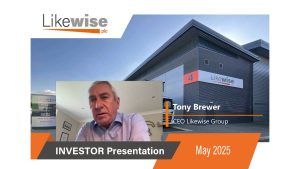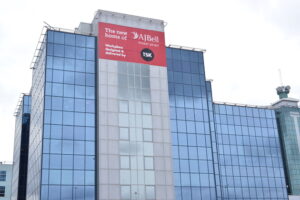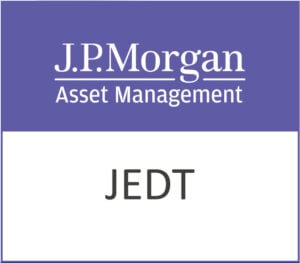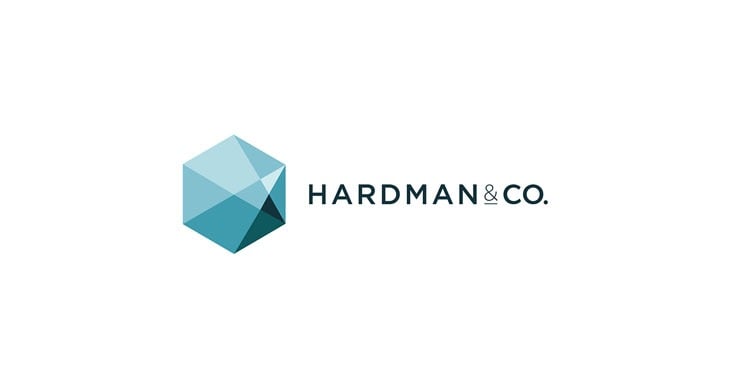City of London Investment Group plc (LON:CLIG) is the topic of conversation when Zeus Capital’s Research Director Robin Savage caught up with DirectorsTalk for an exclusive interview.
Q1: Robin, you’ve just published a research note on City of London Investment Group entitled “Update and KMI deal approved”, what were the key points in this update?
A1: On Monday 13th July, at its EGM, shareholders approved CLIG’s all share acquisition of Karpus Management Inc, which can be called KMI. The morning after, Tuesday 14th, the company published a trading update, which they normally do just after year-end on which was the 30th June. The updated confirmed that CLIM is trading “business as usual” & has been throughout the global pandemic.
In summary, if we break it down into the parts:
KMI acquisition is scheduled to complete on 1 October this year:
– Consideration is 24.1m new CLIG shares which will increase the number of CLIG’s shares issued by 91%.
– KMI will add US$3.4 billion of Funds under Management and will increase the diversification of the Group, adding exposure to US balanced portfolios and reducing CLIG‘s Emerging Market exposure from 70% to around about 43%.
– KMI has a high revenue margin, 85 basis points so that will lift the Group revenue margin from around about 75 basis points to around about 79 bps & it should enable the Group operating profit margin to rise above 60%.
– Importantly, there’s a really good fit with CLIG’s investment philosophy and its management philosophy. Essentially, it is very vigorous in terms of how it choses its investments for its clients in a similar way to the way in which CLIG does for its institutional clients. In terms of management philosophy, they are careful about spending shareholders money.
In terms of the trading update for CLIM, it’s been very good but they have only released information about the net inflows & the Funds under Management so this year they have not given a clear indication to what the revenues & the profits are because they think that’s appropriate in light of the acquisition that is going through:
– In terms of net inflows, there were US$338 million of net inflows, that is 6.3% of opening of Funds under Management so an attractive percentage of net inflows. It’s more than I expected at the beginning of the year, it’s more than I expected at halfway through the year & a very large amount, nearly US$600 million flowed into FUM) with the Opportunistic Value and Developed strategies which now have US$1.5 billion under management.
– The Emerging Markets and Developed strategies outperformed so that is 92% of the Funds under Management, outperforming benchmarks.
– In the last 3 months, in the fourth quarter of their year, the Funds under Management rose 25% riseto US$5.5 billion. That was slightly ahead of the market because of the inflows they got.
– The Board has made a comment about the final dividend, they say they intend to at least match the same level as last year, last year the final dividend was 18p.
– With the 10p interim, CLIG shareholders should expect total dividend for the last 12 months to be 28p.
Q2. How does this update compare to your forecasts & expectations?
A2: The really important point is that CLIM’s Diversification strategies now contribute 30% of Funds under Management. In December, six months ago, it was 26% & a year ago, it was 22% so a very significant increase in diversification of CLIM business.
The second point is the acquisition of KMI which was announced on the 9th June, this will further diversify CLIG’s exposure away from Emerging Markets & enhance CLIG’s earnings:
- When KMI completes, Emerging Markets will be, as I mentioned earlier, 43% of the assets managed by the Group.
- KMI manages balanced portfolios which typically have 60% of assets allocated to bonds so it’ll mean the assets are much less sensitive to movements in equity markets and the emerging markets in particular.
- The acquisition will enhance Group earnings.
Next point, in terms of the actual expectations, the update for CLIM was encouraging because these net inflows of $338 million, they were 20% above my expectation so significant.
With US$182 million net inflows in the first half, that means that the second half net inflows were US$156 million net which was 59% better than my estimate of US$98 million so that’s very encouraging.
The flows into these Developed and Opportunistic Value funds were strong which improve that diversification.
The financial markets were much stronger than we expected when we last wrote about the company which was in April, the peak of the COVID crisis in terms of the contaminations. So, when we’re looking at the way in which the business is developing, we are very encouraged.
In terms of the actual Zeus Capital forecasts, while the fourth quarter net inflows in the financial markets were stronger than we expected, we are going to leave our forecasts for the year to June broadly unchanged. This is because there is little benefit of putting in an upgrade at this stage &, of course, that increase in assets in only benefitting that final quarter & we already have had the first half numbers & the third quarter indication.
So, essentially the year to June is done, that should be good, people will have the actual numbers coming out on the 14th September.# & then the question is, what are our numbers for June 2021 & in June 2022.
We are now going to include KMI from the 1st October because that’s when they e4xpect to join CLIG & the KMI acquisition is expected to enhance the increased earnings of CLIM because of the higher markets. We’re expecting it to enhance earnings by 4% so without KMI, we would be expecting 43.9p & with KMI, 45.1p. These forecasts are done with the current US dollar exchange rate at US$1.25 to a £1 and with no change in financial markets & importantly, no net inflows even though there has been a very good recent flow of net inflows.
For 2022, with a full year from KMI, we are also expecting earns to be enhanced; with KMI we’re expecting 47.1p we would expect a 32p dividend so we expecting probably 7% growth over the next 2 years in the dividends which his very encouraging & we’re expecting the net cash to move from around about £10 million at the end of June to £20 million in June 2021 & £30 million by June 2022.
Q3. How does the update inform shareholders and market’s valuation of City of London Investment Group shares?
A3: On our new forecasts, with only a 9 month contribution from KMI in the current year to June 2021 & at £3.85 a share, CLIG shares trade at a PE multiple of only 8.5 & they offer a 7.8% dividend yield so that is quite attractive.
With a full year contribution from KMI, the earnings multiple falls to nearly 8 and the dividend yield rises to over 8.
I think there are 3 points for investors to consider when they’re thinking about investing in CLIG:
- The first is that shareholders should be very confident in the CLIG dividend flow ticking up to 28p or more for this year & ticking up next year & the year after.On a 6.0% dividend yield, CLIG shares would trade at £4.67p which is 21% above the current price.
- The second point is the higher Funds under Management imply growth in revenues and profits supported by the KMI acquisition and the CLIM’s Diversification strategies. Without net inflows, we see scope for the 7% growth in dividends over the next two years. With net inflows, it should be higher & with a very comforting increase in cash pile. So, total shareholder return over the next year should be very much supported by those dividends but also by the improvement in the PE multiple.
- That’s the third point really, in terms of what sort of PE multiple & the increasing diversification of CLIG revenues and profit streams should increase the earnings multiple.
When CLIG was “predominantly an Emerging Market only fund manager”, its valuation was directly linked to the MXEF Index & it was supported by its ability to generate dividends. With over half of its Funds under Management now coming from Diversification strategies, CLIG’s valuation should become less linked to the MXEF index and more related to its ability to generate distributable returns and grow through Diversification. This should lead to an improved double-digit low-teens, or even mid-teens PE ratio.
















































